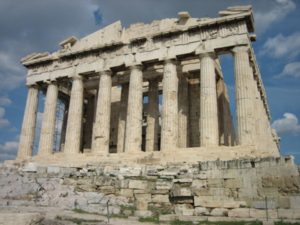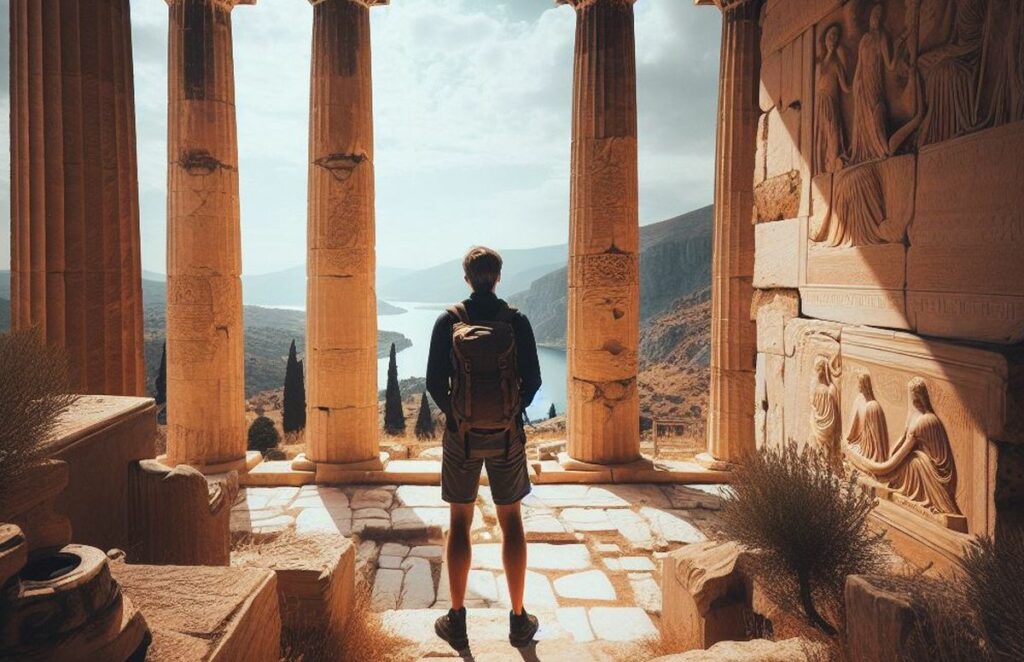 Athens is the capital of Greece. It is located rather south of mainland Greece, east of the Peloponnese. Its port, Piraeus, is the main starting point by boat for the Greek islands, and Crete. It can also be shipped to Africa.
Athens is the capital of Greece. It is located rather south of mainland Greece, east of the Peloponnese. Its port, Piraeus, is the main starting point by boat for the Greek islands, and Crete. It can also be shipped to Africa.
Understand
Athens was one of the most important cities of antiquity, and throughout history, even under the Ottoman occupation, it has retained importance, especially through the port of Piraeus.
Athens hosted the Olympic Games (Olympics) of 1896, the first of the modern era, then those of 2004.
The city has experienced significant growth in the twentieth century, but its extent is limited by the mountain ranges that surround it. Because of these mountains and the density of the population, and despite the public transport infrastructure put in place during the Olympics, Athens has significant air pollution problems.
Since the Olympic Games, the urban service of the city has improved considerably. The capital has an efficient network of buses, trams and subways that serve the main areas of the city, the airport and the port of Piraeus. Traffic is very dense in the city. Getting around on foot is quite convenient, even though avenues where traffic is heavy are painful because of the noise. Motorists respect pedestrians, provided they stay in their place.
Discover the city on foot
Available for rent in the following establishments:
– Athens Hilton Hotel
-Sofitel Athens Airport
-King George Palace * Baby Grand
– Travel Profile Agency
To see here
– the Acropolis which occupies one of the hills of the city and where we find the Parthenon, the Erechtheum, the Propylaea, the theater of Dionysus, the museum …. Entrance about 12 €. Free locker for bags.
– the Agora below the Acropolis, in the district of Monastiraki with the temple dedicated to Hephaestus (one of the best preserved of all Greece), the reconstituted stoa and which houses a museum …
– the Archaeological Museum of Ceramics (ancient cemetery)
– the Dionysos Theater
– the Temple of Zeus (Olympion)
– the National Museum of Athens, where you can find all the treasures of ancient Greece. Entry: € 6.80.
– the Museum of Cycladic Art Entry € 5.00.
– The districts of Plaka and Monastiraki: the alleys lined with restaurants and souvenir shops of the old Turkish district offer a very friendly atmosphere.
– the neo-Classical buildings (among others) of the university (street Akadimias and surrounding) or the Parliament (Syntagma place). Buildings built during the reconstruction of athenes in the nineteenth century.
The district anafiotika little known district, built under the acropolis by the worker of the reconstruction of athenes (XIXeme). These workers from the Cyclades built here their homes in the style of their original house: an impression of being on the Cyclades! Do not hesitate to take the narrow streets to enter the neighborhood! (around the street anafiotika)
The district exarchia high place of the alternative culture Athenian. A student district steeped in history: the heart of student revolutions during the fall of the dictatorship in the 1970s, and the heart of the student demonstrations in 2010!
the Parthenon on the Acropolis and its museum; the Agora of Athens (nerve center of the ancient city) and its museum; the Roman Agora and the Tower of the Winds (a hydraulic clock built in the first century BC); the Thesion; the theater of Dionysos; the Panathenaic Stadium, rebuilt by Hadrian and Herod Atticus and renovated in 1896;
There are also three other places that can be visited: Odeon of Herodes Atticus, seen from the Acropolis. the National Pinakotheque of Athens; the Bénaki Museum;
To see not far
Cape Sounio. It is called “Sounion” in French literature. Accessible by bus (about 3h for 80km). A legendary temple, dedicated to Poseidon, overlooking the sea. One of the most visited ancient sites of Greece and nowadays widely exploited by the tourism industry. To visit preferably in spring or autumn and yes, it’s worth it!




